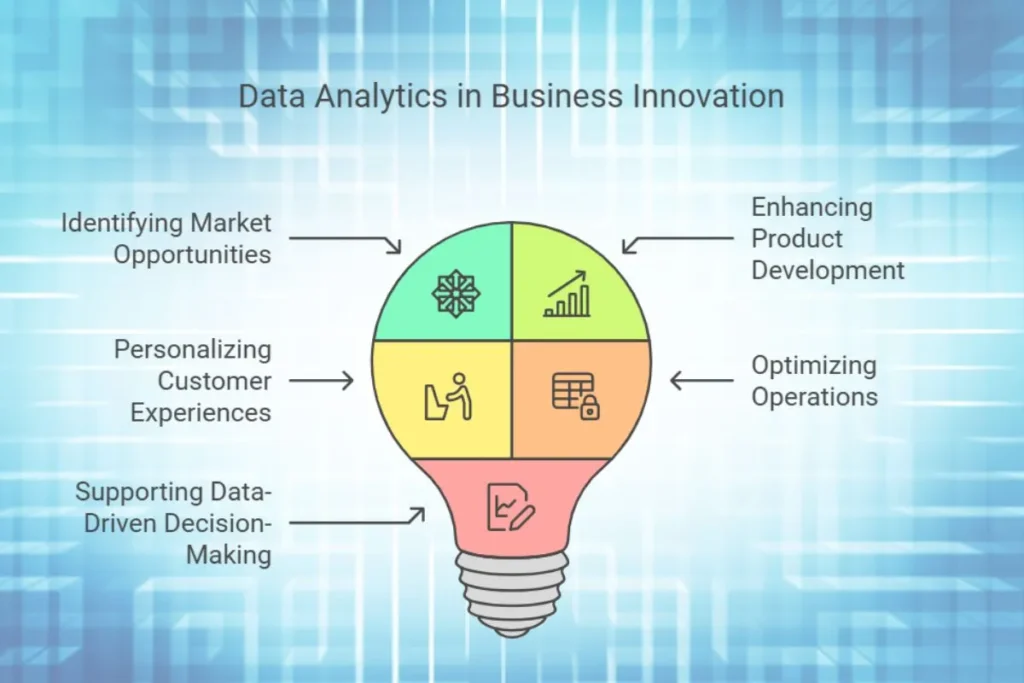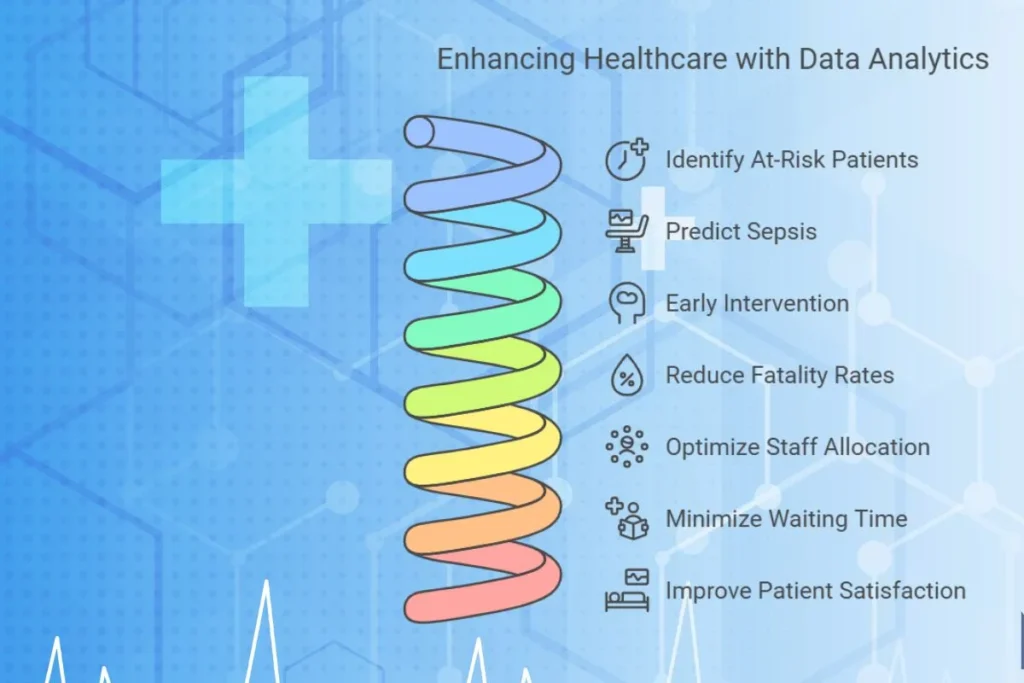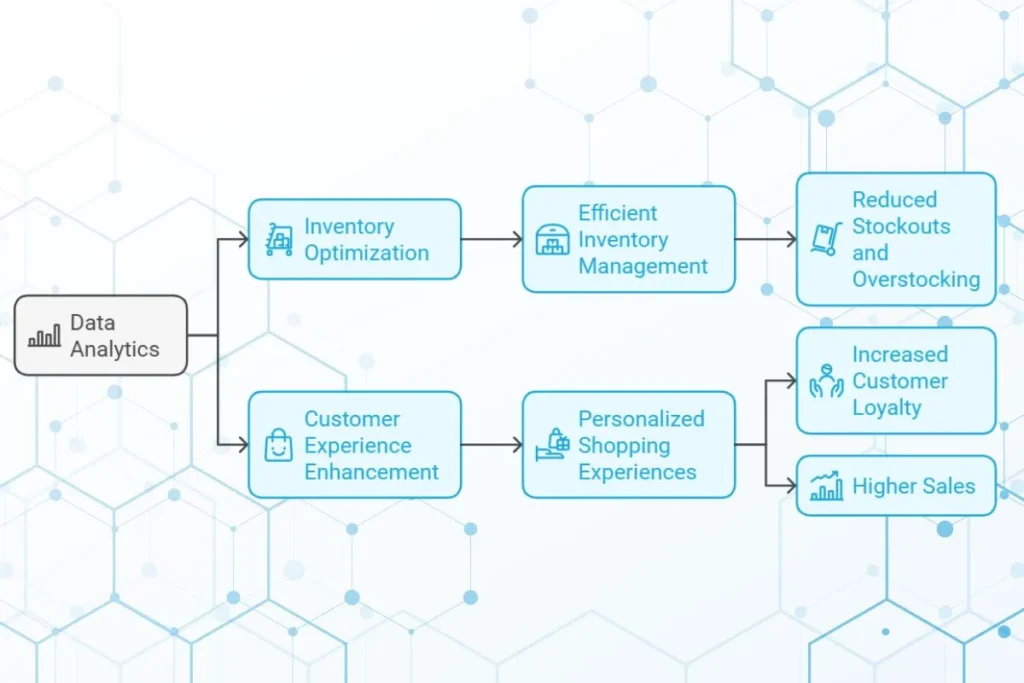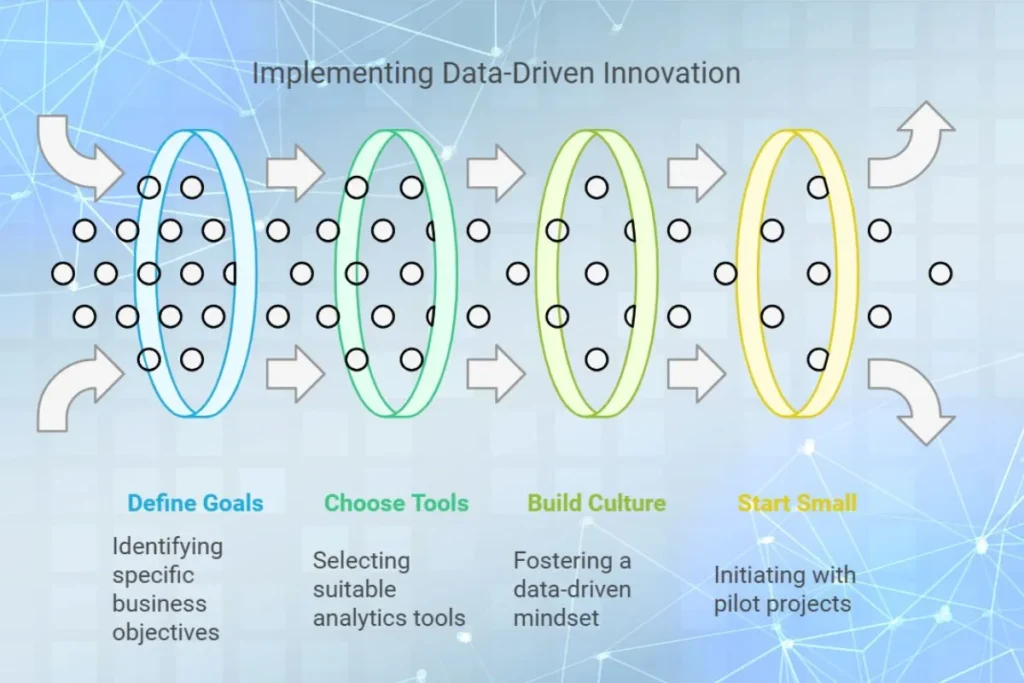Now a days innovation in businesses is main requirement to remain competitive. Data analytics is a key to enable that innovation. From discovering new market opportunities to enhancing customer experiences, data analytics empowers businesses to make informed decisions and discover information that sparks new ideas. In industries like healthcare, finance and retail, companies are using data analytics to gain a competitive edge, optimize operations and drive growth.
In this article, we shall explore how data analytics drives innovation in businesses by highlighting real world examples and explain why it is essential to make decision based on analyzed data for any successful business strategy.
The Role of Data Analytics in Business Innovation
Data analytics helps companies extract actionable tips from data, which enables them to identify trends, patterns and growth opportunities that might otherwise go unnoticed. By using this data, businesses can take following actions:
1. Identifying Market Opportunities
Analytics can reveal untapped market opportunities by analyzing customer preferences, market trends and competitive positioning. Companies use these information to create new products, expand services or target new customer segments.
2. Enhancing Product Development
By using customer feedback, purchasing behavior and product performance data, companies can improve their products to better meet customer needs or develop entirely new product.
3. Personalizing Customer Experiences
Analytics helps businesses to make suitable their product to meet individual customer preferences. This personalization increases customer satisfaction, develops loyalty and boosts sales.
4. Optimizing Operations
Data analytics identifies inefficiencies in business processes, which enables companies to streamline operations, reduce costs and improve productivity. It can discover bottlenecks, reduce waste and optimize resources.
5. Supporting Data Driven Decision Making
Analytics allows businesses to make decisions based on data rather than intuition, which reduces risk and enhances accuracy. Real time data analysis supports fast decision making in response to market changes.

How Data Analytics Fuels Innovation in Key Industries
1. Healthcare: Improving Patient Outcomes and Operational Efficiency
In healthcare, data analytics enables hospitals to improve patient outcomes, streamline operations and drive preventative care.
– Predictive Analytics for Patient Care: Hospitals use predictive analytics to identify patients at higher risk which helps them to take preventative actions to reduce readmissions. For example, a study by Mount Sinai Hospital found that data analytics helped predict sepsis, which allowed for early intervention and reduced fatality rates.
– Operational Efficiency: Analytics tools optimize staff allocation, which ensures healthcare providers have the right resources at the right time. This minimizes waiting time and improves patient satisfaction.

2. Finance: Managing Risks and Enhancing Customer Feelings
In the financial sector, data analytics plays a crucial role in risk management, fraud detection and personalized services.
– Risk Management: Financial institutions use data analytics to assess credit risks, which enables them to more accurate loan approvals. Machine learning models analyze customer credit histories and economic conditions.
– Personalized Services: Banks and fintech companies use data analytics to understand customer preferences. This enables them to offer tailored financial products and services. For instance, American Express uses data analytics to predict customer spending patterns, this enables them to send targeted offers that improve customer satisfaction and engagement.

3. Retail: Optimizing Inventory and Enhancing Customer Experience
Retailers use data analytics to gain information into customer behavior, optimize inventory and drive personalized marketing.
– Inventory Optimization: By analyzing sales patterns and customer demand, retailers can manage inventory more efficiently, which reduces stock-outs and overstocking. For example, Walmart uses data analytics to predict demand, which ensures popular products are always in stock.
– Customer Experience: Retailers like Amazon and Sephora use data to personalize shopping experiences, which recommend products based on past purchases and browsing behavior. This has been shown to increase customer loyalty and drive higher sales.

Key Benefits of Data Driven Decision Making in Business
Data driven decision making allows businesses to base their strategies on facts, rather than intuition or guesswork. Here are some key benefits:
1. Informed Strategic Planning:
With data analytics, businesses make decisions based on data, which enables them for more accurate forecasting and resource allocation.
2. Enhanced Agility:
Companies can respond quickly to market changes, adjusting their strategies based on real time data.
3. Competitive Advantage:
Organizations that use analytics to drive innovation stay ahead of competitors by adapting faster to consumer needs and market trends.
Metrics and KPIs for Effective Decision Making
Businesses use specific metrics and Key Performance Indicators (KPIs) to measure the impact of data analytics on their innovation efforts. Here are a few common ones:
– Customer Lifetime Value (CLTV):
Measures the total revenue a business expects from a single customer over their lifetime. It is used to understand the long term value of customer relationships, especially when investing in personalized marketing.
– Churn Rate:
Tracks the percentage of customers who stop doing business with a company over a given period. It is commonly used in subscription based services to assess customer satisfaction.
– Net Promoter Score (NPS):
Checks customer loyalty by asking how likely customers are to recommend the company. It is a valuable indicator of overall customer satisfaction and experience.
– Revenue Per Customer:
Helps track the effectiveness of cross selling and upselling initiatives. It’s widely used in retail and e-commerce to monitor average transaction values.
– Inventory Turnover Rate:
Particularly useful in retail, this metric shows how quickly products sell, which helps businesses to avoid overstocking or stock-outs.

Real World Examples of Companies Driving Innovation with Data Analytics
Example 1: Netflix – Transforming the Entertainment Industry
Netflix uses data analytics extensively to provide personalized content recommendations. By analyzing viewing patterns, Netflix suggests shows and movies that align with users’ preferences, which enhances user satisfaction. Additionally, Netflix uses analytics to inform content production decisions, which enables them to invest in shows that are likely to perform well based on historical data.
Example 2: Target – Using Predictive Analytics for Customer Insights
Target uses predictive analytics to identify customer purchase patterns. By analyzing transaction data, Target accurately predicts which customers are likely to need specific products, such as baby products for expecting mothers. This allows Target to deliver relevant promotions, which increases sales and customer loyalty.
Example 3: Coca-Cola – Enhancing Product Innovation with Data
Coca-Cola gathers data from various customer touchpoints, including vending machines, social media and product usage data, to understand customer preferences. By analyzing these insights, Coca-Cola has introduced new products like flavored beverages suitable to changing tastes, this ensures its product offerings remain relevant.
Getting Started with Data Driven Innovation in Your Business
If you are interested in using data analytics to drive innovation in your business, consider these steps:
1. Define Your Goals:
Clearly identify what you want to achieve – whether it is improving customer satisfaction, optimizing operations or discovering new market opportunities.
2. Choose the Right Tools:
Invest in analytics tools that suit your business needs. Tools like Google Analytics, Tableau and IBM Watson offer various capabilities for data visualization, predictive analysis and machine learning.
3. Build a Data Centric Culture:
Encourage a data driven mindset across the organization. Train employees on using data analytics tools and integrating insights into everyday decision making.
4. Start Small and Scale Up:
Begin with a pilot project, analyze the outcomes and gradually expand data driven practices across departments.

Conclusion:
Data analytics is the most useful business tool. It is a catalyst for innovation. Companies across industries are utilizing data to create new products, refine customer experiences and stay competitive. From healthcare to retail, the transformative impact of data analytics is reshaping how businesses operate and innovate.
By using data analytics for decision making, your business can discover new growth opportunities, improve operational efficiency and better meet customer needs. Data analytics is a necessity for any business looking to drive meaningful, sustainable innovation and growth.

